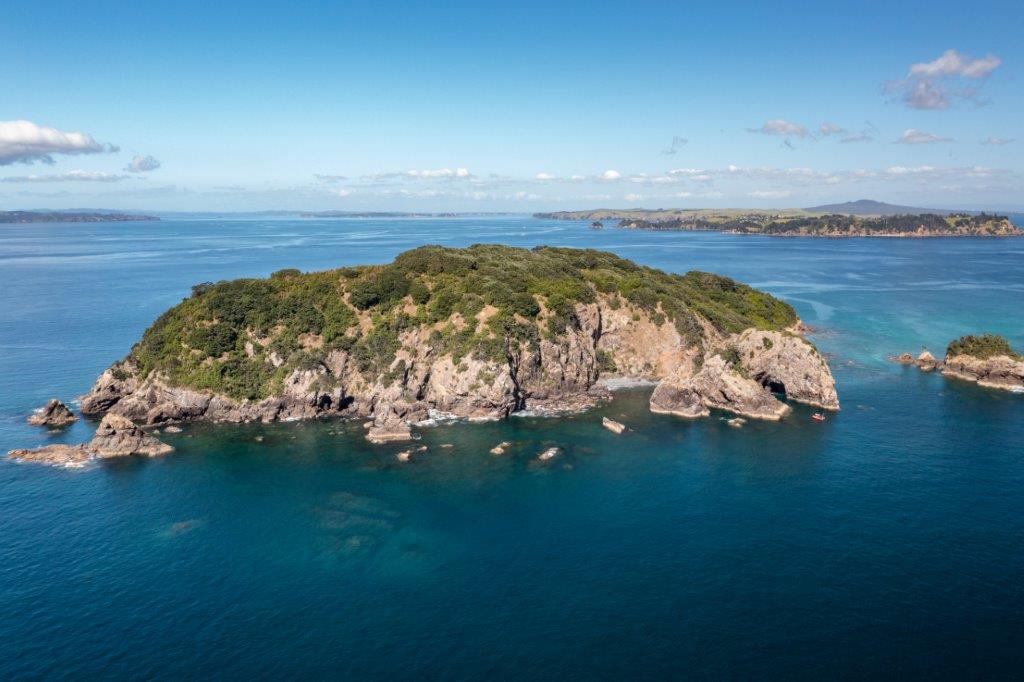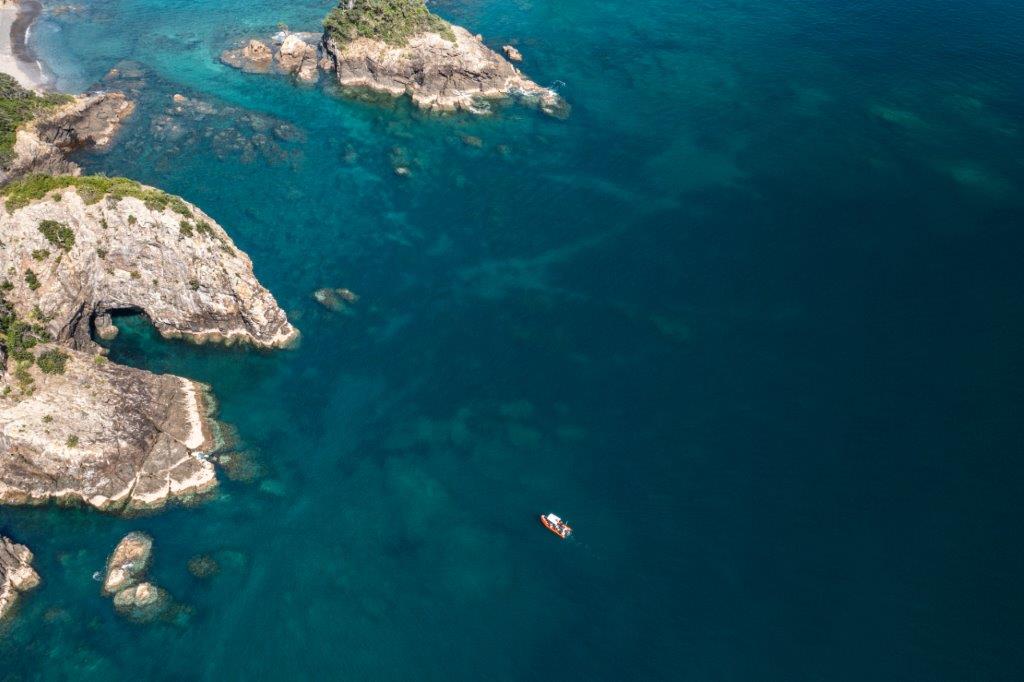The Noises hold a very special interest for seabird lovers. Being home to at least…
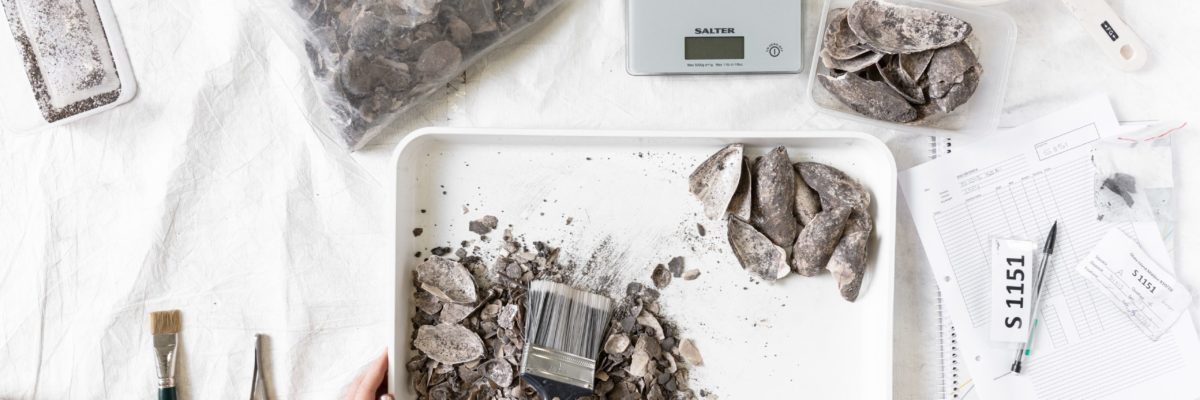
Cataloguing the past
The archaeological excavations on Ōtata Island in 2020 and 2021 brought back over half a tonne of material to the Auckland Museum Tāmaki Paenga Hira and additional help was required to sort through the contents. This is where we come in.
Over the summer, we sorted over one hundred multi-kilo bags into smaller bags containing identified shells, bones, charcoal, stones, artefacts, and more, turning those many, many bags of midden into a content-rich database ready for interpretation. Our focus extended no more than 30cm in front of us as we hunched over trays piled with midden. This work was facilitated by Auckland Museum Tāmaki Paenga Hira and the Edward Earl Vaile fund.
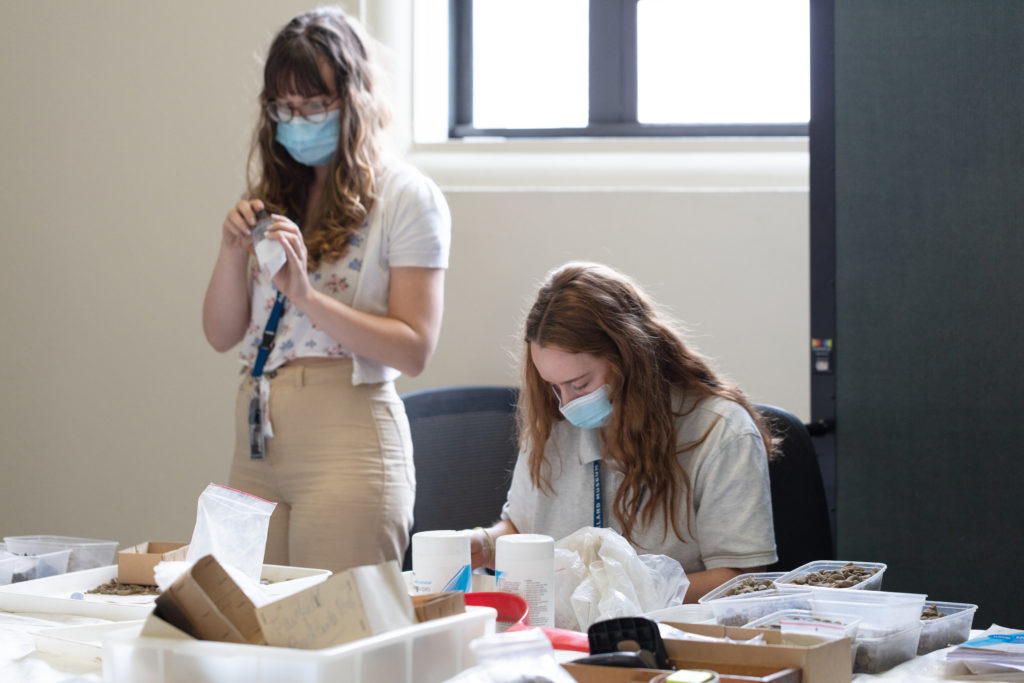
A midden is an accumulation of domestic material, mostly composed of food waste such as charcoal, bone and shell, but can also include broken and discarded stone tools, fishhooks, and stone flakes. If interpreted with care, middens can reveal what the environment was like and how people lived in the past.
The process of midden sorting starts by weighing and sieving the bagged material, then sorting it based on the material type. These include, charcoal, stone, shell such as green, blue mussel and oyster, and the bones of fish, rats, tuatara, and birds. If possible these are then identified by species. Each grouping is then re-bagged separately, and the contents counted and weighed, before being catalogued with any associated observations into the database.
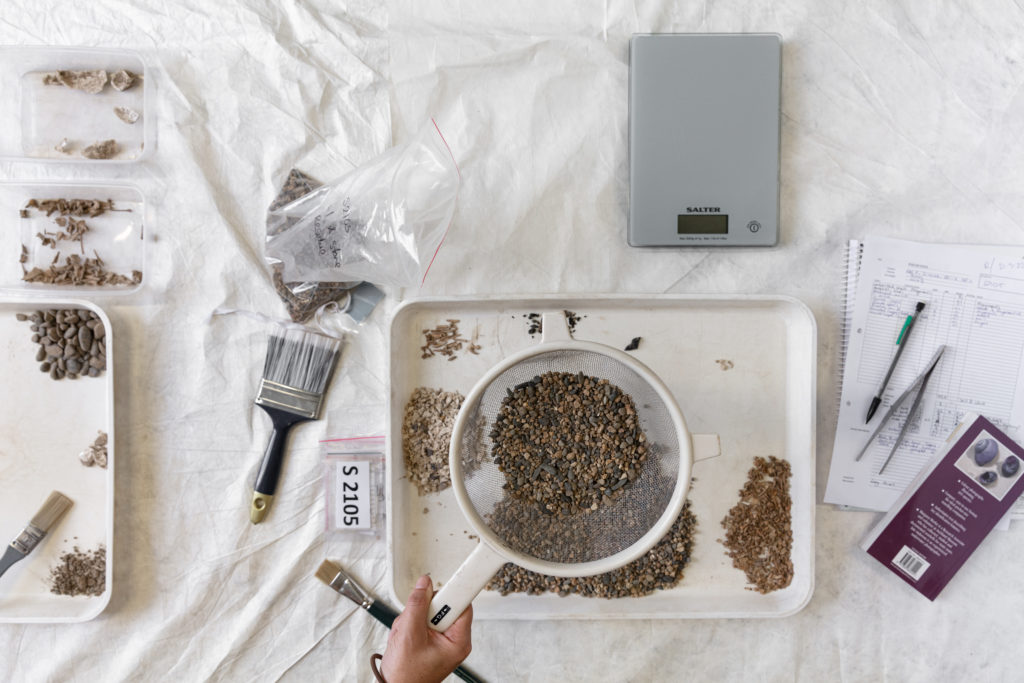
Fishbone dominates the bone assemblage, with the most visible species being snapper. The large size of the snapper jaws found in the midden suggests that species used to be a lot bigger than what we are seeing today. Burning is present on some of the bone and shell, often associated with hāngī and fires, indicating that cooking was undertaken at the site. We also found Kākā and Kūri bones, the latter revealing that people brought their dogs all throughout the Hauraki Gulf. Man’s best friend since day one.
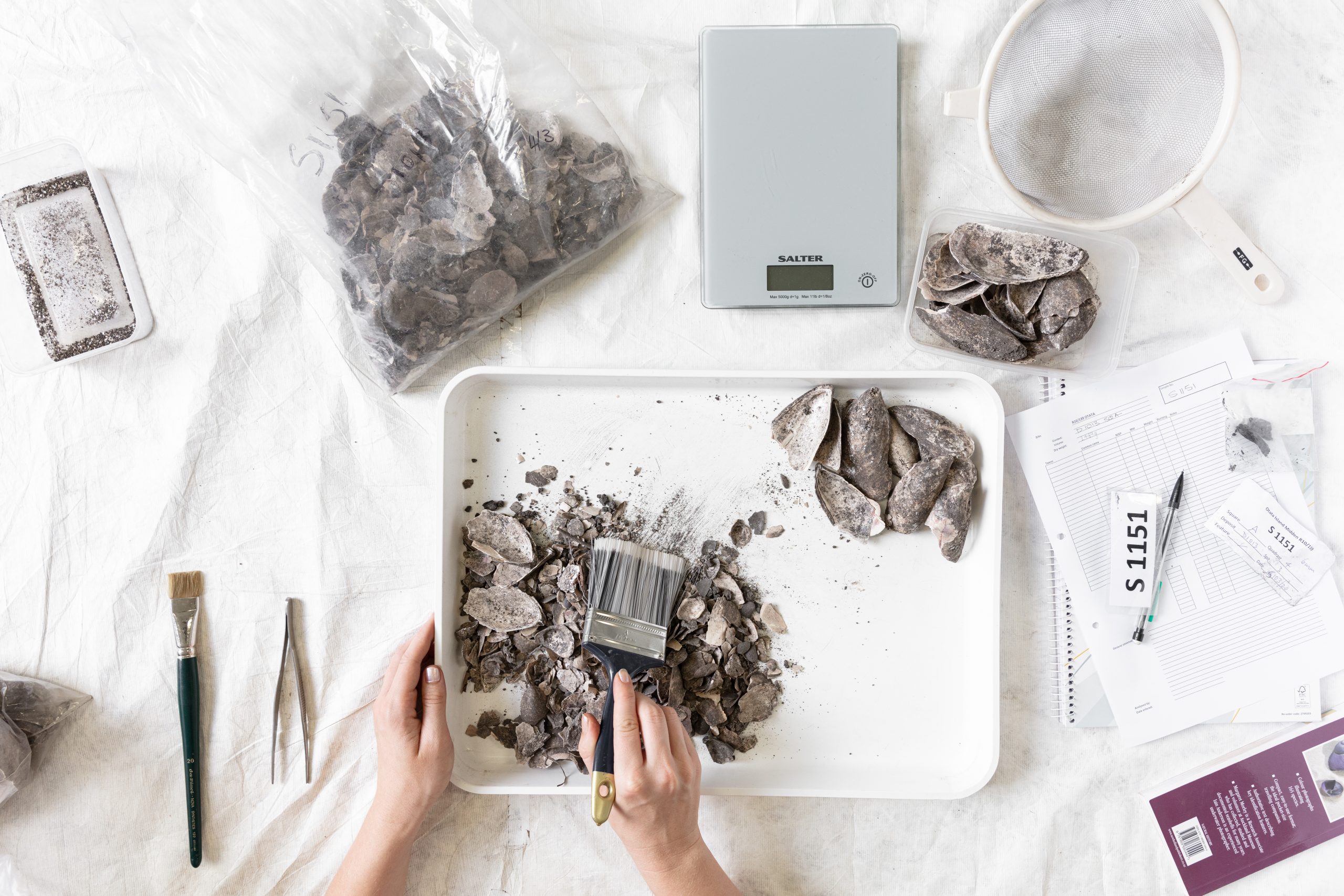
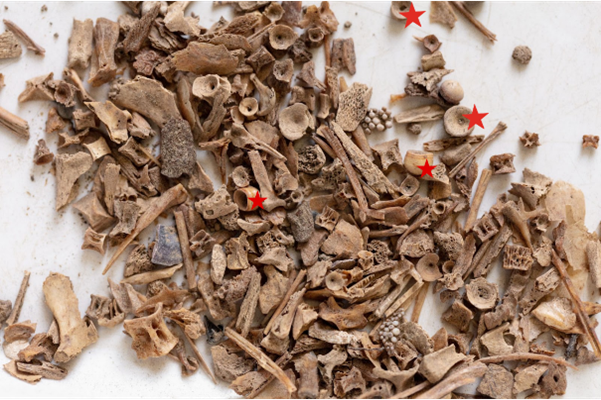
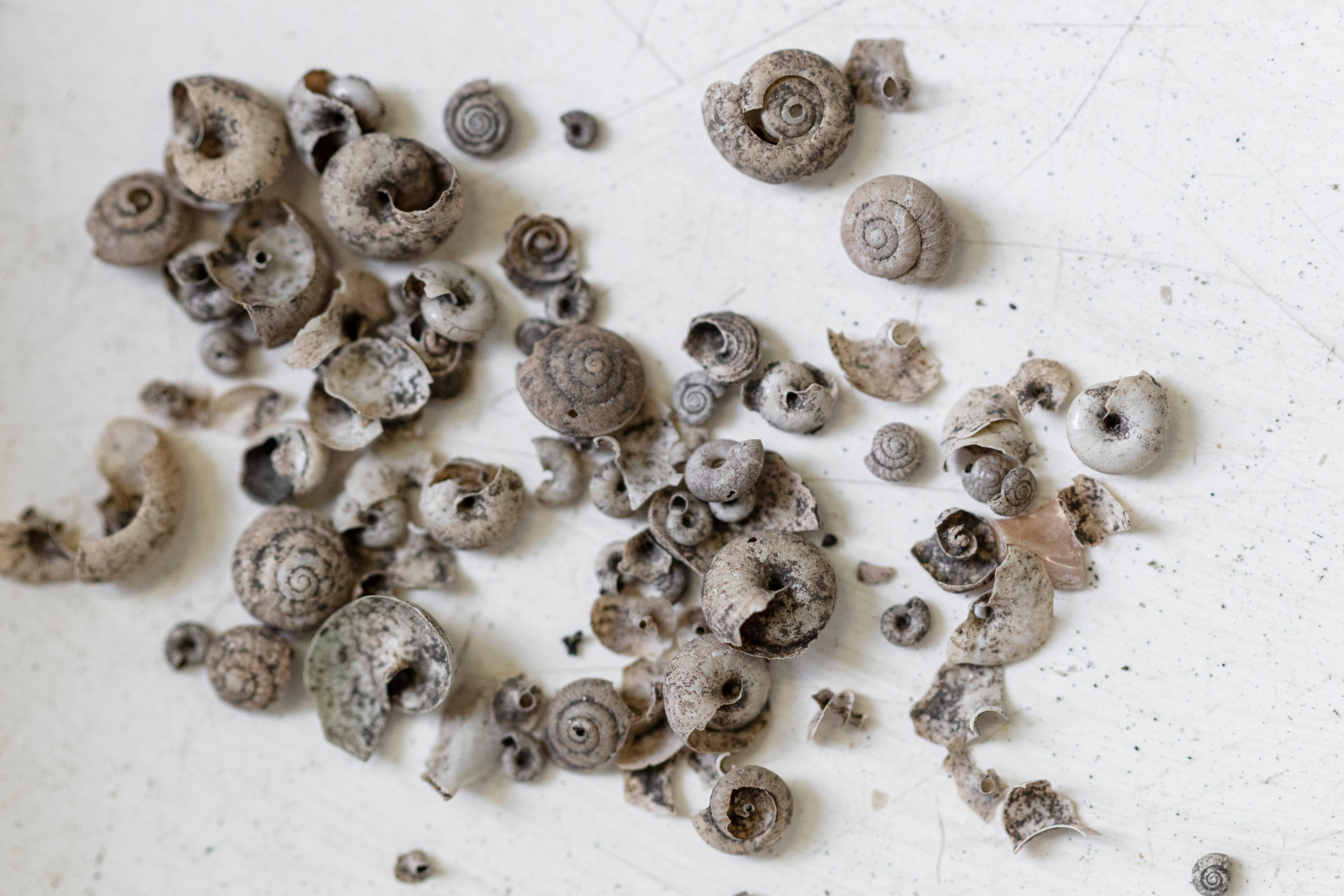
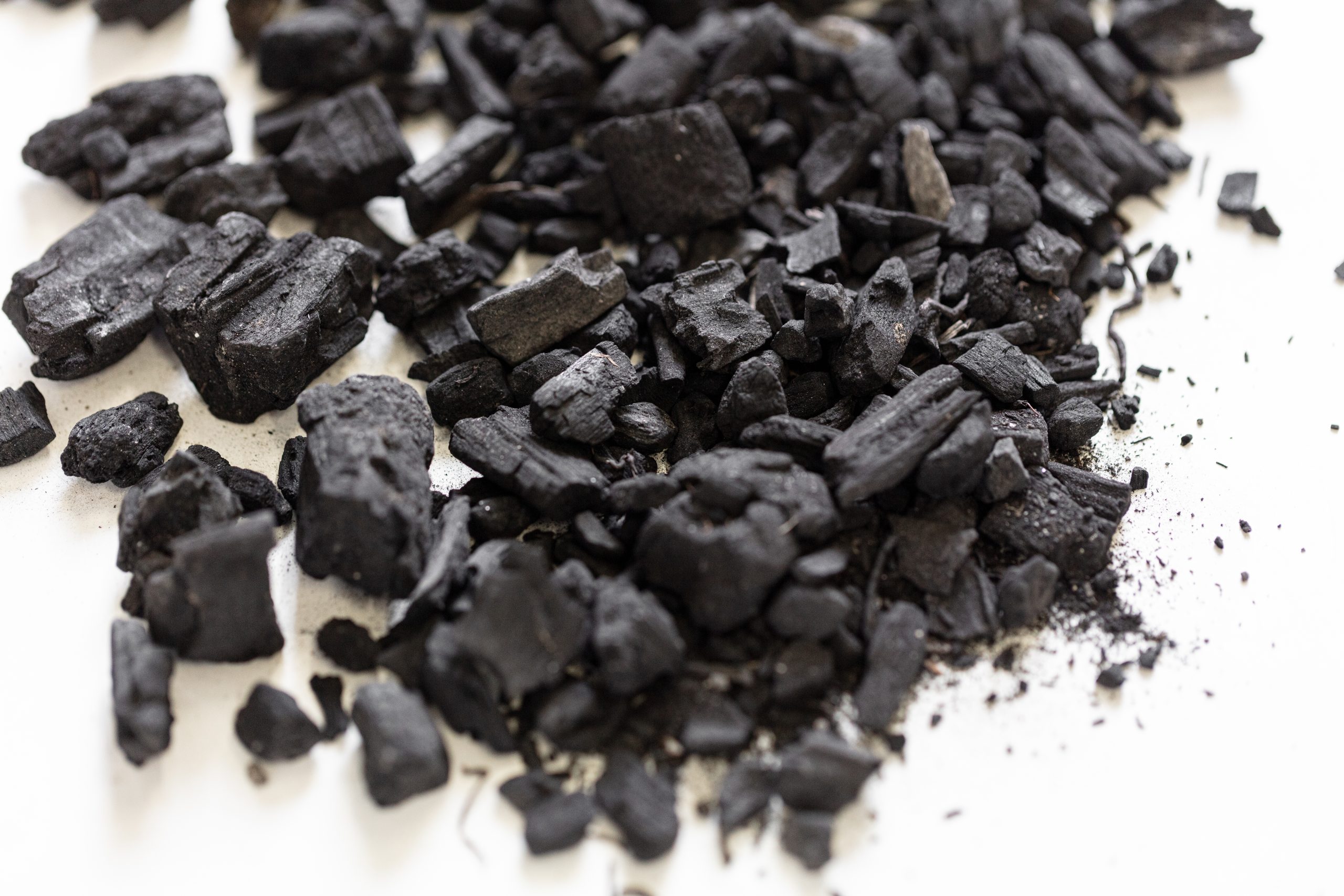
By looking at the frequency and diversity of the shells and bone in the midden, we can get insights into the sites seasonality, foraging behaviours, and the impact human predation has on the marine environment. It also provides a window in the islands past environment and species diversity.
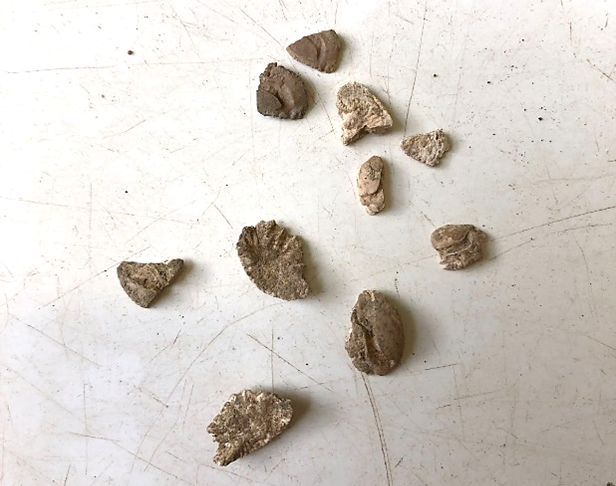
The lived experience of people here is seen in connections made through the midden’s taonga. Tools found in excavations tell us what activities were being undertaken, and the flake debris that we have found in the midden can indicate how these tools were made and the resources selected. We found lots of small obsidian flakes, the colour and geochemistry of which tell us where that obsidian was from. For example, if you hold a piece to the light and it is green, then that obsidian is most likely from Mayor Island in the Bay of Plenty – indicating connections and trade between past groups.
The wide breadth of information archaeology can provide is incredibly important for the wider project as it gives a holistic overview of the area. With the data produced by the museum used alongside manawhenua indigenous knowledge, ecological restoration of the Noises will focus on both sustainability and preservation of the area’s history. The island’s cultural and natural history is well demonstrated through the midden’s layers, and can be used to interpret the effects that human settlement and the natural environment have had on each other. The midden is a greatly preserved example of the relationship between people and the environment in the Hauraki Gulf. However, it continues to be threatened by sea level rise and storm surges.
We both loved our time as members of the Museum’s archaeology team and the Ōtata project, and have both continued to work as volunteers for the project.


